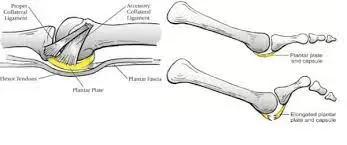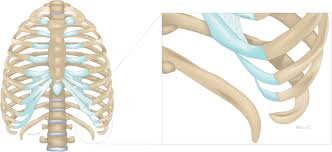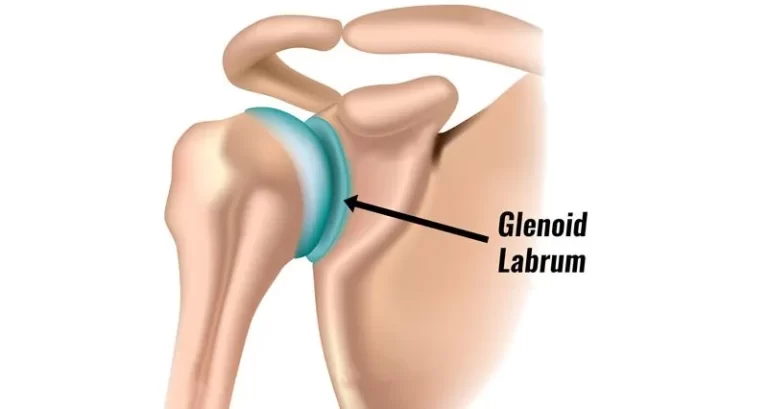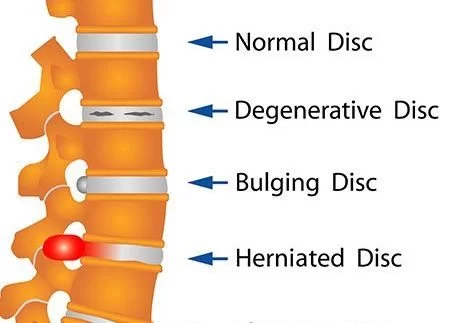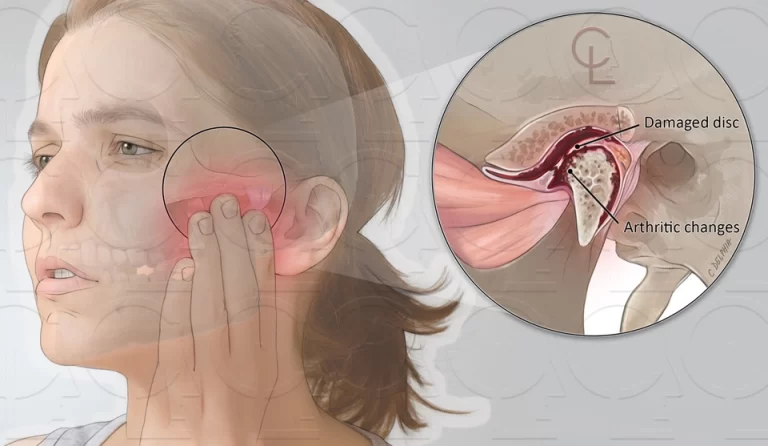Plantar Plate Tear
Table of Contents
Introduction
The plantar plate tear is important for foot mechanics. It involves the plantar part of the first metatarsophalangeal joint (MTPJ). It provides dynamic and static stability of the joint by protecting the articular surfaces of the joint.
The lesser toe also provides joint stability and protects the joint surface. When discussing plantar plate pathologies, the physician must recognize two categories of injuries: MTPJ (big toe) and second to fifth (little toe) injuries.
Clinically relevant anatomy
A plantar plate tear is a serious injury that affects the metatarsal plate, a dense fibrous structure located on the sole (base surface) of the metatarsal joints (toe joints) of the foot. The sole is an important part that helps stabilize the toes and prevents excessive stretching during walking and running. When a plantar disc ruptures, it can cause a variety of clinical signs and problems, including:
Pain and swelling: A tear in the plantar fascia can cause localized pain and swelling at the base of the affected toe.
Metatarsalgia: The condition can cause metatarsalgia, which is pain and inflammation in the ball of the foot that often radiates to the toes.
Toe instability: A tear can cause the affected toe to become unstable, causing it to misalign or drift onto adjacent toes.
Hammer toe formation: Chronic tears in the sole can contribute to the development of hammer toes or claw toes, the affected toe bends at the middle joint.
Crossed toe: In some cases, a plantar tear can cause one toe to cross over or under the adjacent toe, causing discomfort and gait disturbances.
Swelling and callus formation: Swelling and pressure changes due to a tear can cause calluses or calluses on the soles of the feet.
Limited range of motion: Reduced stability and integrity of the footplate can lead to a limited range of motion and reduced flexibility in the affected toe.
- Diagnosing a plantar plate tear disc in the foot involves a thorough clinical examination, often with imaging tests such as X-rays or MRIs to assess the extent of the injury.
- Treatment may include conservative approaches such as rest, physical therapy, orthotics, and modified footwear.
- In cases where conservative measures are not effective, a surgical procedure may be considered to repair or reconstruct the damaged plantar plate.
- It is important to note that proper diagnosis and treatment by a qualified medical professional is necessary to effectively treat ruptured discs in the sole and prevent long-term complications.
Mechanism of injury/pathological process
The first MTPJ plantar plate complex can be damaged after acute trauma or a chronic degenerative process can occur. The mechanism of injury for a metatarsal tear usually results from repetitive strain, trauma, or a structural imbalance affecting the metatarsophalangeal (MTP) joint of the foot. Here are the mechanisms of injury that can lead to a ruptured disc in the sole of the foot:
Repetitive stress:
- Repetitive and repetitive activities that involve pushing off the toes, such as running, jumping, or certain sports, can put excessive stress on the plantar fascia over time.
- This can gradually lead to microtears and the weakening of the bond.
Toe abnormalities:
Structural abnormalities of the toes, such as hammertoes or long second toes, can cause weight and pressure to be unevenly distributed across the sole of the foot, making it more susceptible to tearing.
Trauma:
A direct injury to the foot, such as stubbing a toe or dropping a heavy object on it, can cause a sudden force.
Improper footwear:
Wearing shoes that are too narrow, tight, or with insufficient arch can cause unnatural pressure, in the front of the foot, which contributes to the formation of plantar tears.
Overuse or Overloading:
Excessive force or stress on the toes, especially if they are not properly treated, can lead to overuse injuries and plantar tears.
Age and degeneration:
With age, degenerative changes can occur in the plantar fascia, which weakens.
Gait:
Abnormal walking or running, such as overpronation or supination, can cause balance disorders that affect the distribution of forces in the foot and increases the risk of tearing the sole.
Inflammatory diseases:
Diseases such as inflammatory arthritis (such as rheumatoid arthritis) can promote inflammation and weakening of the plantar plate, making it more susceptible to tearing.
It is important to note that many factors and sometimes a combination of factors can contribute to a ruptured disc in the foot mechanisms may be involved. Early identification of risk factors and prompt measures such as appropriate footwear, orthotics, and modification of activity level can help reduce the risk of plantar laceration and related complications.
Signs and symptoms of Plantar plate tear
The signs and symptoms of a plantar plate tear in the foot can vary in intensity and presentation. Common indicators of this injury include:
Pain: Persistent pain at the base of the affected toe, usually felt underneath the joint, which can be sharp, dull, or throbbing.
Swelling: Swelling around the area of the injured toe, often accompanied by redness and warmth.
Instability: A sense of instability or “shifting” in the affected toe, making it feel less secure during weight-bearing activities.
Difficulty Walking: Discomfort or pain while walking or bearing weight on the foot, especially when pushing off the toes.
Change in Gait: Altered walking pattern to compensate for the pain, which can lead to modifications in how you distribute weight while walking.
Toe Deformity: The affected toe may appear misaligned or slightly elevated at the base due to the tear.
Crossover Toe: In some cases, the injured toe may begin to drift or cross over the adjacent toe.
Limited Range of Motion: Decreased flexibility and reduced ability to move the affected toe due to pain and instability.
Localized Tenderness: Tender to touch at the site of the plantar plate tear.
Callus Formation: Formation of calluses or corns under the ball of the foot due to changes in pressure distribution.
Painful Push-off: Pain when pushing off the toes, especially noticeable during activities that involve forward motion or elevation, such as climbing stairs.
It’s essential to consult a healthcare professional if you experience any of these symptoms, especially if they persist or worsen over time. Early diagnosis and appropriate treatment can help prevent further complications and promote proper healing of a plantar plate tear.
Other symptoms
- The below-given other signs and symptoms may indicate plantar plate injuries.
- The beginning of persistent, constant, activity-related pain and tenderness over the metatarsal head (ball of the foot).
- Swelling beneath the ball of the foot that extends towards the toes.
- Symptoms equivalent to compression syndromes of the plantar digital nerves, as a consequence of microtrauma or a space-occupying lesion.
- Symptoms incorporate tenderness of the heel and medial plantar arch and numbness along the medial plantar foot.
- The toe gapping sign (Churchill sign) – i.e. there is a more significant spread in the middle of the 2nd and 3rd toe.Loss of ground touch: the inability of the toes to touch the ground generally.
- Existence of insignificant toe deformities: dorsal elevation, crossover toe, pronation, or supination
Diagnostic Procedures
To diagnose plantar plate injuries, the following diagnostic procedures are recommended:
X-ray:
completed in standing to visualize dropped metatarsals.
Ultrasound:
Assumeda greatest -a line tool to fast and accurately localize and characterize forefoot pathologies. Using static and dynamic ultrasound techniques is standard for assessing plantar plate pathology, with dynamic assessment offering greater sensitivity. A partial- or full-thickness plantar plate deficiency is the most typical representation of a plantar plate tear that may be easily seen on ultrasound.
Computerized tomography (CT):
It may be used in challenging situations where surgery is required for plantar plate injury. This is a diagnostic method of choice when signs and symptoms of soft tissue injury are current.
Magnetic resonance imaging (MRI):
It has increased accuracy in analyzing plantar plate injuries. It is a selected method to differentiate between plantar plate injury and Morton’s neuroma.
Assessment
Interview
Considering a patient’s history is an incredible point of connection. The person should be requested about the following:
- Predisposing factors (e.g. wearing high heels)
- Activities and habits connected with the condition (sports-related trauma, professional dancers)
- History of wearing orthotics
Observation/Palpation
- Observation should be fulfilled with the patient in a standing position to choose the direction of weight shift, the presence of smaller toes abnormalities or deviations, or an expansion in space in the middle of the toes.
- Next, the clinician should observe while the patient executes a single-leg stance.
- A history of sharp pain in the MTPJs of the smaller toes
- The feeling of local edema
Tests)
Modified Lachman Test(Positive anterior-posterior draw test) :
The clinician stabilizes the patient’s toe at the metatarsal and exercises a drawer test on the phalanges. A tiny clunk may be heard as the joint subluxated in the plantar direction. It is believed the most trustworthy and precise tool to organize and grade a plantar plate lesion.
Thompson and Hamilton presented a category procedure established on the grade of subluxation of the proximal phalanx:
G0: stable joint. Pain is current, but no joint deformity.
G1: mild instability (subluxation < 50%) indicated by widening the space in the middle of the toes and medial displacement. Joint pain and swelling.
G2: moderate instability (subluxation > 50%) with medial, lateral, dorsal, or dorsomedial deformity and toe hyperextension. Joint pain with temporary or no swelling.
G3: Also seen largely change in (capacity for joint dislocation): dorsal or dorsomedial malformation with the second toe overlaying on the hallux. A stretchy toe clawing may be present. Joint and feet pain, little or no edema.
G4: dislocated joint: severe deformity and repaired toe clawing. Joint and feet pain, little or no edema.
The antagonistic plantar grip test or “paper-pulling” test:
This examination is assessed using an 8cm x 1cm strip of paper put under the 2nd toe of the standing patient. The patient is not able to ‘grip’ the paper.
A positive Reverse Windlass Test:
The patient is standing on the small box with the metatarsals supported at the edge of the box.
No pathology: The windlass tool plantarflexes the proximal phalanx over the border of the box.
Pathology: Lack of toes plantar flexion.
Manual muscle strength: This examination is for the intrinsic muscles and flexor digitorum longus (toe plantar flexion).
Treatment of Plantar plate tear
The conservative administration of a plantar plate injury may use a holistic approach, which works shoe wear, local foot support, local and global strength and mobility (foot and lower leg), and a posture assessment.
Shoe wear: No barefoot walking, no high heels, no stretchy, minimalist kind of shoes, like open-toes or flip-flops. Rather, a stiff-soled shoe, a stiff boot, or a rocker shoe with a delicate insert is suggested.
Local foot support: This may contain customized orthotics, taping, and toe spacers. Customized orthotics usually involve a metatarsal pad;
Toe spacers:
Taping to offload metatarsal head
Kinesiotaping method: little fork method
Kinesiotaping for Plantar Plate Injury
Cloth sticky tape: “AIDS” ribbon tape to limit the extension of the second MPTJ
Physiotherapy treatment
Physiotherapy plays a crucial role in the conservative management of a plantar plate tear in the foot. The goals of physiotherapy treatment are to reduce pain, promote healing, restore function, and prevent recurrence. Here are some common physiotherapy approaches for treating a plantar plate tear:
Pain Management:
Physiotherapists may use various techniques such as ice or cold therapy, ultrasound, or manual therapy to help alleviate pain and reduce inflammation in the affected area.
Rest and Immobilization:
Initially, rest and immobilization through taping or bracing may be recommended to allow the injured plantar plate to heal.
Toe Mobilization Exercises:
Gentle range-of-motion exercises for the toes can help maintain flexibility and prevent stiffness while promoting healing.
Range of motion exercises-
This can help maintain flexibility and prevent stiffness in the affected toe while promoting healing for a plantar plate tear. Here are some gentle range of motion exercises you can consider under the guidance of a healthcare professional:
Toe Flexion and Extension:
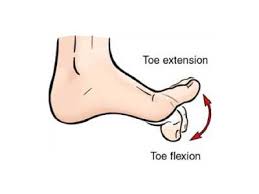
- Start with sitting in a comfortable position with your foot elevated.
- Gently bend the affected toe downward (toward the sole of your foot) while keeping the other toes relaxed.
- Maintain the stretch for a few seconds, then slowly return the toe to the neutral position.
- Slowly lift the affected toe upward (toward the top of your foot), stretching the plantar plate.
- Repeat the flexion and extension motions for several repetitions.
Toe Abduction and Adduction:
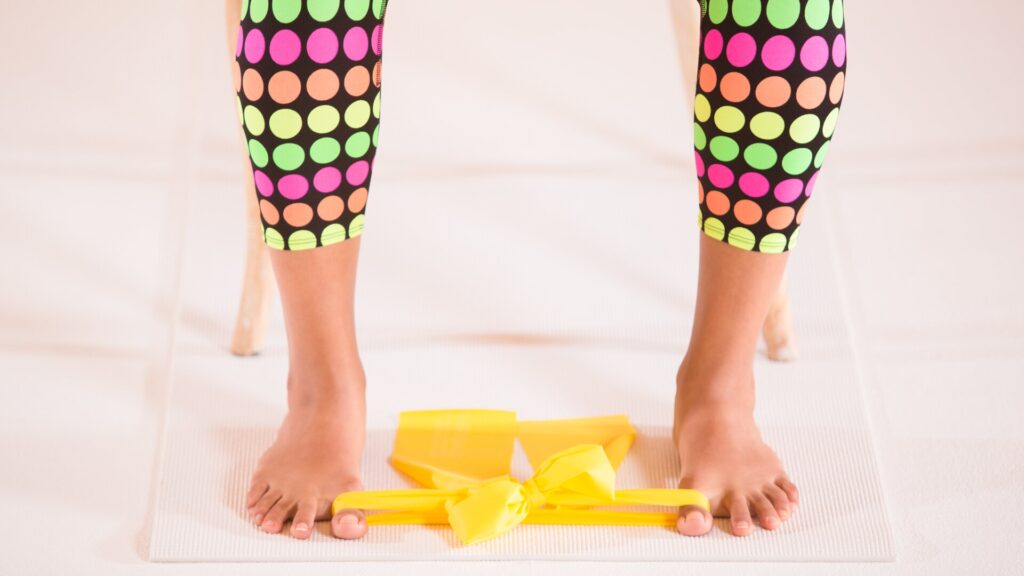
- Start with Sitting or lying down with your foot elevated.
- Slowly spread the affected toe away from the other toes (abduction), creating a small gap between the toes.
- Maintain the stretch briefly, then bring the toe back to a neutral position.
- Next, gently bring the affected toe closer to the adjacent toe (adduction).
- Repeat the abduction and adduction movements for several repetitions.
Toe Circles:
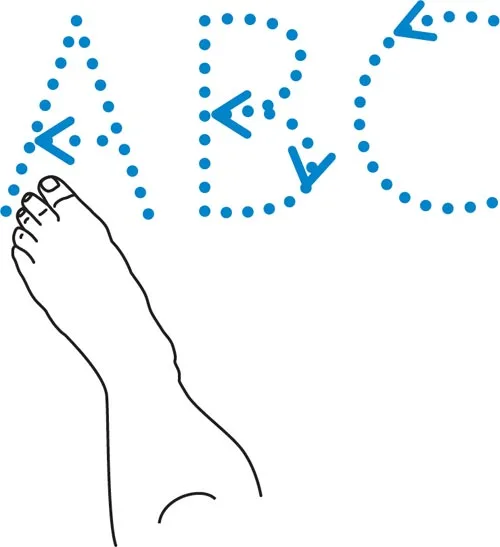
- Start with Sitting comfortably and elevate the foot.
- Slowly rotate the affected toe in a circular motion, moving it through its full range of motion.
- Perform several circles in one direction, then switch to the opposite direction.
Towel Scrunches:
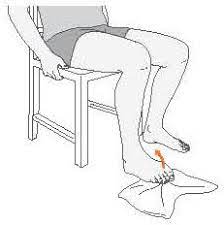
- Put a small towel on the floor and use your toes to scrunch it up toward you.
- Release the towel and repeat the scrunching movement for several repetitions.
- This exercise helps strengthen the muscles of the foot while promoting mobility.
Toe Spreading:
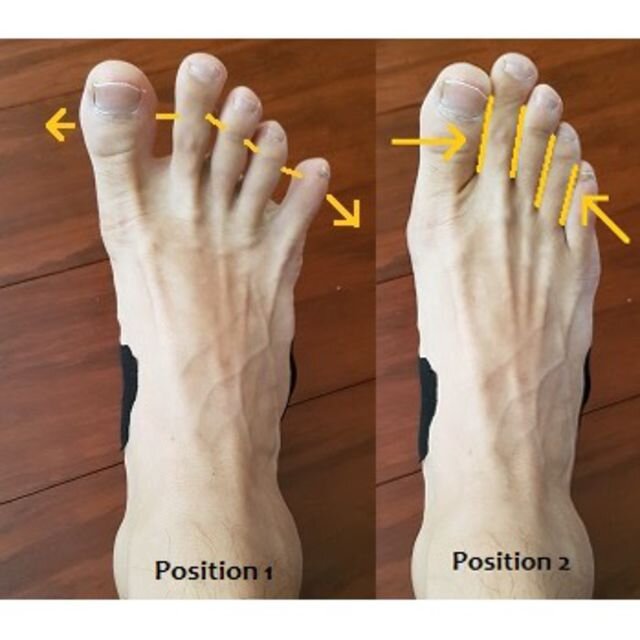
- Start with Sitting with your foot elevated and the toes relaxed.
- Slowly spread the toes apart as wide as possible.
- Maintain the stretch for a few seconds, then release.
- Repeat the toe-spreading movement for several repetitions.
Recognize to accomplish these exercises slowly and within a pain-free range of motion. If a person experiences any discomfort or improved pain, stop the exercise and consult the healthcare provider or physiotherapist for guidance. It’s essential to follow a personalized exercise plan developed by a healthcare professional to ensure proper healing and recovery for your plantar plate tear.
Strengthening Exercises:
Gradually introducing strengthening exercises for the intrinsic foot muscles can improve stability around the affected joint and help prevent further injury. Strengthening exercises for a plantar plate tear should be performed under the guidance of a healthcare professional, like a physiotherapist. These exercises aim to strengthen the intrinsic muscles of the foot, improve stability around the affected joint, and promote healing. Here are some gentle strengthening exercises that may be suitable for individuals with a plantar plate tear:
Toe Flexor Strengthening:
- Start with sitting in a chair with the foot slightly elevated.
- put a towel or resistance band under your toes.
- Gently curl the toes to grip the towel or band, holding the contraction for a few seconds.
- Release and repeat for several repetitions.
Marble Pick-Up:

- Put marbles or small objects on the floor in front of you.
- Utilize the toes to gather up each marble and place it in a container.
- Repeat the process until a person has picked up all the marbles.
Toe Squeezes:

- Start with Sitting or lying down with the foot elevated.
- Put a soft ball, like a stress ball, or foam ball, under the toes.
- Slowly squeeze the ball using the toes, then release.
- Repeat for several repetitions.
Short Foot Exercise:
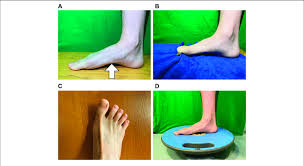
- Start with sitting in a chair with the foot flat on the floor.
- Slowly contract the muscles in the arch of the foot to shorten it without curling the toes.
- Maintain the contraction for a few seconds, then release.
- Repeat for several repetitions.
Toe Scrunches with Towel Resistance:
- Start with Sitting comfortably with a towel placed under the foot.
- Scrunch the toes to grip the towel and resist as you try to pull the towel towards you.
- Maintain the contraction for a few seconds, then release.
- Repeat for several repetitions.
Toe Abduction and Adduction with Resistance:
- Use a resistance band or tubing looped around the toes.
- Slowly spread the toes apart against the resistance (abduction) and then bring them back together (adduction).
- Repeat the abduction and adduction movements for several repetitions.
Always start with a few repetitions and gradually increase the intensity and repetitions as your foot strengthens. If you experience pain or discomfort during any exercise, stop immediately and consult your healthcare provider or physiotherapist. They can customize a strengthening program based on your individual needs and monitor your progress to ensure safe and effective recovery from plantar plate tear.
Gait Analysis and Modification:
Physical therapists can evaluate your walking and running mechanics and guide you in making modifications to reduce stress on the injured leg.
Orthotics:
Custom orthotics may be prescribed to support and distribute pressure more evenly across the foot.
Stretching:
Gentle stretching exercises for the calf muscles and Achilles tendon can help relieve tension and reduce stress on the plantar fascia.
Calf stretches against the wall:

- Begin by standing facing a wall with your hands resting on the wall at shoulder height.
- Step back with one leg and keep it straight, bearing and touching the ground.
- Bend the front knee, keeping the back leg straight and the heel touching the ground.
- Maintain the stretch for about 10-20 seconds and then switch sides.
Calf stretches on stairs:
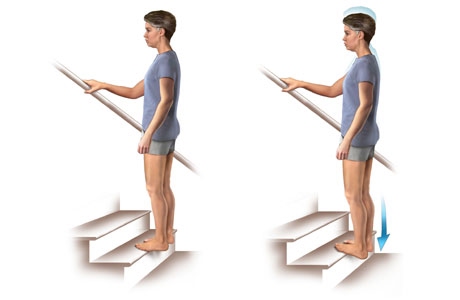
- Begin by standing on a step or sturdy raised surface with the soles of your feet resting on the step and your heels hanging over the edge.
- Gently lower your heels to the bottom of the ladder to feel the stretch in your calf muscles.
- Maintain the stretch for about 10-20 seconds.
Achilles stretches while sitting:
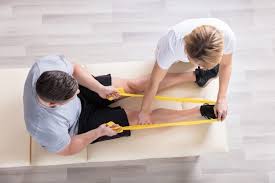
- Commence with sitting on the floor with your legs extended in front of you.
- Bind a towel or resistance band around the sole of your foot.
- While bending the ankle, slowly pull the cloth or bandage so that the toes come towards you.
- Hold the stretch for about 10-20 seconds and then switch sides.
Toes raise in one step:
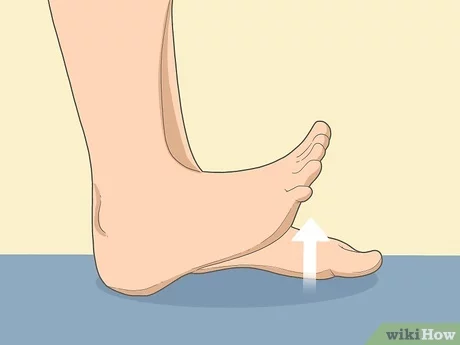
- Start by standing on the edge of the ladder with your heels hanging over the edge.
- Gradually lower your heels down the step, feeling the stretch in your calves.
- Raise the heels back to the initial position.
- Repeat this movement several times.
Ultrasound or laser therapy:
These methods can be used to improve circulation and promote tissue healing.
Functional rehabilitation:
As your recovery progresses, exercises that mimic real activities (functional exercises) may be added to help you regain strength, balance, and coordination.
Footwear recommendations:
Physiotherapists can advise on appropriate footwear to ensure adequate support and reduce stress on the feet.
Pain relief techniques:
Techniques such as manual therapy, massage, and myofascial release can help reduce muscle tension and relieve pain.
Education and self-management:
Physiotherapists educate patients about proper foot care, exercise techniques, and strategies to prevent re-injury.
It is important to note that the specific physical therapy plan will vary based on the severity of the tear, individual patient needs, and response to treatment. A qualified physical therapist will assess your condition and create a personalized plan to repair the flat plate and promote optimal recovery.
FAQ
As a result, plantar disc tears can easily become more painful and serious without effective treatment. Untreated plantar tears can even lead to hammertoes, arthritis, and other painful long-term problems.
Yes, there are several non-surgical treatments for a ruptured plantar disc. Treatment depends on the severity of the tear but usually includes exercises, massage, taping, shoe changes, splinting, custom orthotics, active modifications, and in some cases even crutches and casts.
In addition to pain on palpation of the joint, perform the Lachman test to assess plantar plate protection. With this test, pull the proximal phalanx onto a dorsally stabilized metatarsal. A phalanx displacement of more than 2 mm indicates a tear or failure of the plantar plate.
Plantar fasciitis, a common cause of heel pain, is caused by inflammation of the tissue along the arch at the bottom of the foot. Yoga can actually help or make plantar fasciitis worse.
Most individuals who have plantar fasciitis recover in several months with conservative treatment, such as icing the painful area, stretching, and modifying or avoiding activities that cause pain.

